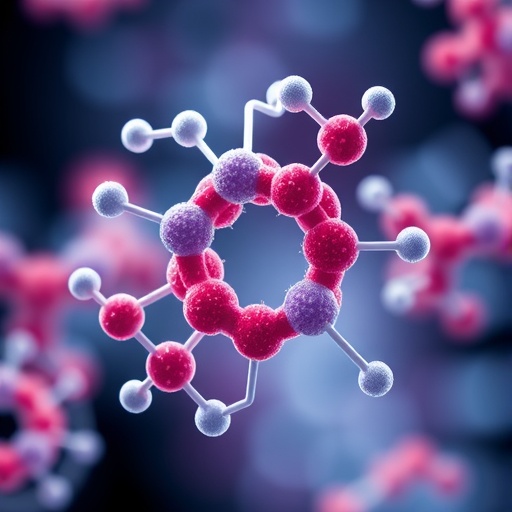In an age where precision in molecular design holds the keys to breakthroughs across chemical research, a new tool poised for transformation has emerged: MolMod. This innovative platform, meticulously crafted by Zhou et al., showcases the potential of using fragment-based generation to optimize molecular properties. Through its robust framework, MolMod promises to streamline the design process for chemists, enabling them to produce optimized molecules with enhanced characteristics efficiently.
The essence of MolMod rests on its fragment-based approach, which provides a powerful mechanism for researchers to modify existing molecular structures. By understanding how small parts, or “fragments,” interact within a larger molecular context, scientists can predict and enhance the properties of new chemical entities. This methodology is not merely a theoretical construct; it draws on the extensive database of molecular interactions and the principles of computational chemistry that have been refined over decades.
One of the critical advantages of using a platform like MolMod is its capacity to reduce the time and resources typically required for molecular optimization. Traditionally, the process of creating a new compound involves trial and error, combined with a significant reliance on laboratory experimentation. However, with MolMod’s computational algorithms, chemists can simulate the effects of various modifications on a molecule’s behavior before synthesizing them in the lab. This predictive power could reduce material costs and accelerate the pace of discovery.
As researchers dive deeper into modifying molecular properties, they are often faced with complex interdependencies that can illuminate or obscure the effects of individual changes. MolMod addresses this challenge through sophisticated modeling that elucidates the relationships between molecular fragments and their contributions to overall molecular behavior. By leveraging high-performing algorithms, MolMod allows users to visualize potential outcomes and refine their hypotheses with greater confidence.
What sets MolMod apart from existing molecular design tools is its user-friendly interface that makes advanced computational techniques accessible to a broader audience. Researchers from various backgrounds, including those who may not be well-versed in computational chemistry, can harness the platform’s capabilities. This democratization of science enhances collaboration across disciplines, fostering advancements that were previously limited to niche experts.
In addition to its accessibility, MolMod’s integration of machine learning techniques further amplifies its potential. As the platform processes more data and user inputs, it evolves, continuously learning to make more precise predictions. This feature not only sharpens accuracy but also empowers the scientific community to make breakthroughs at an unprecedented scale of efficiency.
Moreover, MolMod is equipped to handle a diverse range of molecular types and can be applied across various fields, including pharmaceuticals, materials science, and catalysis. This versatility makes it an invaluable resource for researchers addressing pressing global challenges, from drug design aimed at combating diseases to developing sustainable materials that reduce environmental impact.
A noteworthy aspect of MolMod is its ability to accommodate the growing trend of personalized medicine. By optimizing molecular properties tailored to individual biological responses, researchers can work toward creating more effective therapies that minimize side effects. This focus on the specificity of molecular interactions aligns with recent moves in the medical field toward precision treatment based on genetic profiles.
Interdisciplinary collaboration is another facet of MolMod’s design that cannot be overlooked. By facilitating communication between chemists, biologists, and data scientists, the platform creates an ecosystem where innovative ideas can flourish. The shared understanding and enhanced dialogue equipped by MolMod enhance the potential for scientific breakthroughs that can have far-reaching implications in both industry and academia.
With the ever-increasing demand for rapid advancements in molecular design and optimization, tools like MolMod will play an essential role in shaping the future of research in chemistry. The ability to simulate, predict, and refine molecular structures rapidly will minimize risks and reduce the time from idea conception to practical application. In an era where the pace of innovation can often outstrip our capacity to understand complex systems, the development of efficient tools like MolMod represents a crucial step forward.
Furthermore, the implications of MolMod’s capabilities extend beyond academic curiosity; they are poised to transform commercial practices. Pharmaceutical companies, for instance, can leverage this tool to streamline drug discovery, thereby bringing new therapies to market faster. Similarly, chemical manufacturers can apply MolMod’s insights to improve the properties of existing products, enhancing performance while concurrently reducing production costs.
Looking ahead, the relevance of platforms like MolMod will only grow as interdisciplinary teams seek new solutions to complex problems. The integration of artificial intelligence and machine learning with advanced fragment-based methodologies illustrates a significant leap in how we approach molecular design. As more researchers engage with these resources, we can expect a future filled with innovative compounds that possess tailored properties capable of addressing the challenges of tomorrow.
In conclusion, the introduction of MolMod marks a pivotal moment in the field of molecular optimization. Zhou et al. have provided a platform that not only improves the efficiency and accuracy of molecular design but also encourages collaborative, interdisciplinary efforts in research. As the scientific community embraces these advancements, the potential for discovery and innovation is limitless, promising a new era of molecular science driven by creativity, precision, and unprecedented collaboration.
Subject of Research: Molecular modification through fragment-based generation.
Article Title: MolMod: a molecular modification platform for molecular property optimization via fragment-based generation.
Article References:
Zhou, Y., Sang, Z., Xu, C. et al. MolMod: a molecular modification platform for molecular property optimization via fragment-based generation.
Mol Divers (2025). https://doi.org/10.1007/s11030-025-11342-z
Image Credits: AI Generated
DOI:
Keywords: Molecular Design, Fragment-based Generation, Molecular Optimization, Computational Chemistry, Precision Medicine, Drug Discovery, Interdisciplinary Collaboration, Artificial Intelligence, Machine Learning.




